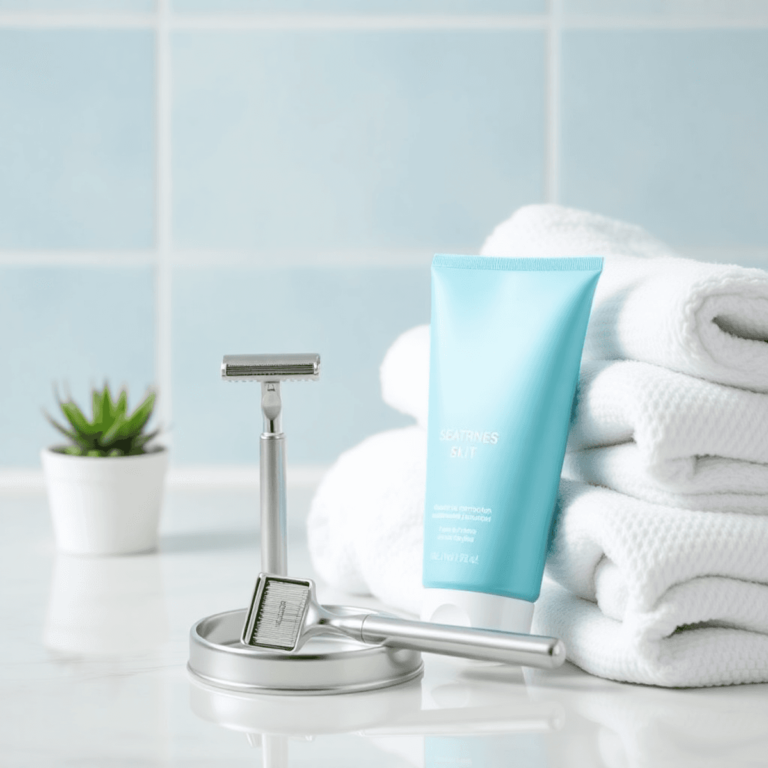How To Dry Your Hair Without Damaging It, According to Stylists

Introduction
Proper hair drying is crucial for maintaining the health and appearance of your hair. Expert advice from stylists can help you dry your hair without causing damage. In this article, we will share insights from professional stylists on how to dry your hair properly, along with an overview of different drying methods. It’s important to note the suitability of each method for different hair types or textures.
The way you dry your hair can significantly impact its health and appearance. By understanding the best techniques for your hair type, you can ensure that your hair remains strong, vibrant, and free from damage.
1. Towel-Drying Techniques
Towel-drying is the first and one of the most common methods for drying hair after washing. It is important to towel-dry your hair gently to prevent damage and breakage. Here are some tips on how to properly towel-dry your hair without causing harm:
- Avoid rubbing vigorously: When you step out of the shower, resist the urge to vigorously rub your hair with a towel. This can rough up the cuticles and lead to frizz and breakage. Instead, opt for a gentle squeezing motion to remove excess moisture from your hair.
- Choose the right towel: The type of towel you use can make a difference in protecting your hair. Microfiber towels or soft cotton t-shirts are more absorbent and less likely to cause friction or breakage compared to regular bath towels. These materials are also gentler on the hair, reducing the risk of damage.
- Blot, don’t twist: Rather than wrapping your hair tightly in a towel turban or twisting it up, gently blot your hair with the towel to remove excess moisture. Twisting can cause the hair strands to become tangled and prone to breakage.
- Step-by-step towel-drying: Here’s a step-by-step guide on how to properly towel-dry your hair without damaging it:
- After washing your hair, gently squeeze out excess water using your hands.
- Take a microfiber towel or soft cotton t-shirt and blot your hair starting from the roots towards the ends.
- Continue blotting until most of the moisture is absorbed.
- If you have long or thick hair, you may need to use multiple towels or sections of a large towel.
- Avoid rubbing or scrubbing motions that can rough up the cuticles and cause frizz.
- Once you’ve removed as much moisture as possible, you can proceed with air-drying or use other drying techniques.
By following these towel-drying techniques, you can minimize damage and maintain the health and appearance of your hair. Remember to be gentle and avoid excessive rubbing or twisting. Incorporating microfiber towels or soft cotton t-shirts into your hair care routine can help keep your locks looking their best.
2. Air-Drying Tips
When it comes to drying your hair without causing damage, air-drying is often the preferred method due to its minimal heat exposure. Here are some expert tips for air-drying your hair effectively without causing any harm:
- Gentle Detangling: Before allowing your hair to air dry, it’s essential to gently detangle it with a wide-tooth comb. This helps prevent knots from forming as the hair strands shrink during the drying process, reducing the risk of breakage and damage.
- Application of Heat Protectant: Even when not using direct heat styling tools, applying a heat protectant spray or serum is crucial to safeguard your hair from potential damage caused by environmental factors. This extra layer of protection can shield your hair from the harmful effects of UV rays, humidity, and pollution.
- Enhancing Natural Air-Drying Results: Different hair types require specific techniques to enhance their natural air-drying results. For wavy hair, scrunching the hair while it dries can help create defined waves. On the other hand, individuals with curly hair may benefit from braiding their hair while it air dries to encourage more uniform and defined curls.
By following these tips and incorporating them into your air-drying routine, you can achieve healthy and beautiful results without subjecting your hair to unnecessary damage.
3. Blow-Drying Best Practices
Blow-drying is another popular method for drying hair quickly. However, if not done correctly, it can cause damage to your hair. Here are some tips on how to blow-dry your hair without causing excessive harm:
- Pre-Drying Technique: Before using a blow dryer, it’s helpful to ‘pre-dry’ your hair first. This involves using a towel or setting the dryer on a gentle airflow mode to remove excess moisture. Aim to get your hair to about 60-70% dry before applying direct heat with the blow dryer. This technique helps reduce overall drying time and minimize exposure to heat. If you’re looking for alternative drying methods, air-drying is also worth considering.
- Protective Products: Applying a detangling spray or heat protectant product before blow-drying can provide additional benefits. These products help with manageability by reducing tangles and knots, making it easier to comb through your hair. They also offer thermal protection, creating a barrier between your strands and the hot air from the blow dryer.
- Choosing the Right Blow Dryer: Not all blow dryers are created equal. When shopping for one, look out for features like negative ion technology that can enhance your blowout experience and minimize damage to your hair. For more insights on mastering perfect blowout techniques, this LinkedIn article could be helpful.
Remember, even with these best practices in place, it’s important to note that excessive reliance on blow-drying may still have consequences on your hair’s health. It’s advisable to give your hair occasional breaks from heat styling and consider other drying methods like air-drying or using a hairdryer with advanced technologies that minimize damage.
4. Professional Tips for Damage-Free Drying
Here are some additional insights from professional stylists on how to dry your hair safely at home:
- Prepare Your Hair: Before using any drying method, make sure to prepare your hair properly. This can include applying a leave-in conditioner or primer product like this one to protect your hair from heat damage.
- Use High-Quality Products: It’s important to use the right products for your hair when blow-drying. One highly recommended product is Kérastase’s L’incroyable Blowdry Créme, which is specifically designed for blow-drying and has been endorsed by experts.
- Avoid Excessive Heat: Exposing your hair to high temperatures can cause damage. To prevent this, always use the lowest effective temperature setting on your styling tools and take breaks during prolonged drying sessions. You can even explore techniques on how to straighten your hair without heat as an alternative.
- Section Your Hair: Dividing your hair into sections can make the drying process easier and more efficient. Use clips or hair ties to separate your hair into manageable sections and use the appropriate attachments (such as a diffuser or concentrator nozzle) for better control and styling results.
- Dry Completely: Make sure that your hair is completely dry before finishing the styling process. This will help maintain its shape and prevent frizz or reversion throughout the day.
If you’re looking for ways to repair heat-damaged hair while still using heat styling tools, you may find this article on how to grow out heat-damaged hair helpful.
Conclusion
It is crucial to understand the significance of implementing the suggested methods for healthier hair drying, as advised by professional stylists. Take note of your drying practices and modify them if needed to reduce potential harm in your everyday routine.










